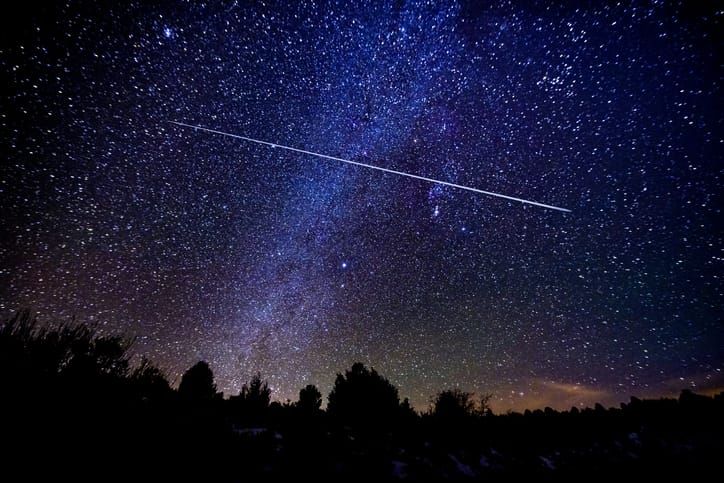The Quadrantids Meteor Shower is a breathtaking celestial event that captivates both amateur stargazers and seasoned astronomers alike. With its dazzling display of shooting stars streaking across the night sky, this meteor shower offers a mesmerizing glimpse into the vast wonders of the universe. In this article, we will delve into the origins and significance of the Quadrantids, explore the best ways to observe this cosmic spectacle, and answer some commonly asked questions about this remarkable phenomenon.
Understanding the Quadrantids Meteor Shower
The Quadrantids derive their name from the now-defunct constellation Quadrans Muralis, which was first observed by the French astronomer Jerome Lalande in the late 18th century. Although the International Astronomical Union removed Quadrans Muralis from its list of recognized constellations in 1922, the meteor shower still bears this designation.
The Quadrantids are thought to originate from the debris left behind by the comet C/1490 Y1. As the Earth passes through the trail of dust and particles scattered by the comet’s tail, these fragments ignite upon entering our planet’s atmosphere, creating the luminous streaks we observe as shooting stars.
The Science Behind Meteor Showers
Meteor showers occur when the orbits of comets interact with the Earth’s orbit. These comets, as they pass closest to the Sun, shed dust and other small particles. When Earth crosses the path of these debris streams, the particles hurtle into our atmosphere, where they burn up due to the intense friction with the air molecules. This combustion produces the brilliant trails of light known as meteors.
Meteor showers, including the Quadrantids, are typically associated with certain times of the year when Earth passes through these known debris streams. The frequency and intensity of meteor showers can vary, depending on the size of the comet and the amount of dust it releases.

Best Time to Watch the Quadrantids
The Quadrantids meteor shower occurs annually in early January, usually peaking around the 3rd or 4th of the month. Unlike many other meteor showers, the peak of the Quadrantids is relatively short-lived, lasting only a few hours. Therefore, it is crucial to time your observation carefully to maximize your chances of witnessing this spectacular display.
Experts recommend planning your observation during the darkest hours of the night, typically between midnight and dawn, when the radiant point of the meteor shower is above the horizon. The radiant point, the area in the sky from which the meteors appear to originate, for the Quadrantids lies near the constellation Bootes.
Ideal Locations for Viewing
To enhance your viewing experience, it is essential to find a location away from sources of light pollution. Urban areas with their bright city lights can diminish the visibility of meteor showers significantly. Opting for dark-sky sites, such as national parks or remote countryside locations, will provide the best conditions to observe the Quadrantids’ brilliance.
Consider checking the weather forecast as well. Clear skies are essential for optimal meteor shower viewing, so choose a night with minimal cloud cover to increase your chances of seeing the Quadrantids in all their glory.
The Quadrantids’ Impact on Astronomical Studies
The Quadrantids meteor shower presents a unique opportunity for astronomers to study the composition and behavior of comets. As meteoroids plunge through the Earth’s atmosphere, they leave behind detectable streaks of light and produce characteristic sonic booms. These observations can be analyzed to gain insights into the size, velocity, and chemical composition of the meteoroids and the parent comet.
By studying the Quadrantids, scientists can also better understand the historical movement and evolution of celestial bodies within our solar system. Additionally, these findings contribute to ongoing efforts to refine models of the universe’s formation and development.
The Quadrantids in Astrological Beliefs
While the Quadrantids capture the fascination and curiosity of astronomers, they have also ingrained themselves in ancient astrological beliefs and cultural folklore. Some cultures associate meteor showers with omens, prophecy, and even divine messages. These cosmic events have been interpreted differently across civilizations, ranging from signs of impending doom to messages of good fortune and rebirth.
Even in modern times, many people still attribute symbolic meaning to meteor showers. They view them as reminders of our connection to the vastness of the cosmos and a call to contemplate our place in the universe.
![]()
Are the Quadrantids Visible Every Year?
Unlike more consistent meteor showers such as the Perseids or Leonids, the Quadrantids can be somewhat unpredictable in terms of their visibility. Factors such as the intensity of the shower and weather conditions can affect their observability. Nevertheless, with proper planning and favorable conditions, you can increase your chances of catching a glimpse of this captivating celestial event.
What Makes the Quadrantids Unique?
One notable aspect that distinguishes the Quadrantids from other meteor showers is their high velocity, with an average speed of around 41 kilometers per second. This swift motion results in striking, bright meteors that are often blue or green in color. Additionally, the Quadrantids’ short peak makes them a fleeting phenomenon, adding a sense of exclusivity to those who manage to witness their splendor.
Equipment for Meteor Shower Observation
Observing the Quadrantids meteor shower requires minimal equipment. The primary tool you’ll need is a comfortable spot where you can recline and gaze at the night sky. It is also advisable to bring warm clothing, blankets, and perhaps a thermos of hot coffee or cocoa to keep you comfortable during the potentially chilly early morning hours.
While binoculars or telescopes are not necessary for enjoying the meteor shower, they can enhance your experience by allowing you to observe any unique details or accompanying phenomena, such as fireballs or persistent trains.
Tips for a Successful Quadrantids Viewing Experience
- Find a location away from light pollution.
- Check the weather forecast for clear skies.
- Plan your observation for the peak hours of the meteor shower.
- Create a cozy, comfortable setup with blankets and warm clothing.
- Bring drinks and snacks to keep yourself energized.
- Be patient and allow your eyes to adjust to the darkness.
- Enjoy the celestial spectacle and take the time to reflect on the vastness of the universe.
The Quadrantids Meteor Shower offers a mesmerizing glimpse into the wonders of our celestial neighborhood. By understanding its origins and taking advantage of optimal viewing conditions, you can create an unforgettable experience that connects you to the extraordinary beauty and mystery of the cosmos. So mark your calendars, make your preparations, and get ready to marvel at the Quadrantids Meteor Shower: a cosmic spectacle that unveils the magnificence of the universe.



